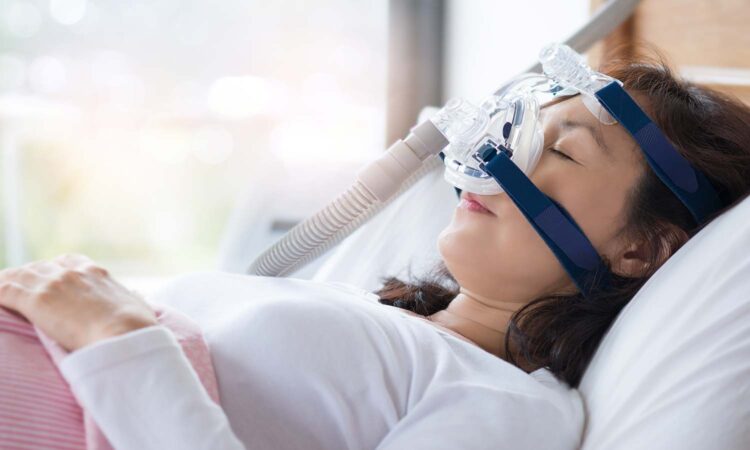If you ask about people’s favourite CPAP machine, you can find those who love an APAP instead. They will tell you that it will change your life. They will tell you that they couldn’t tolerate traditional CPAP. They may even claim that an APAP device eliminates the need to see a physician for sleep apnea.
The traditional CPAP is still the most widely recommended therapy for obstructive sleep apnea (OSA). What’s going on? Why do they still create CPAPs if APAPs are so famous? Well, it turns out that both have very valid reasons. Today, we’ll look at the differences between CPAP and APAP and which machine is best for sleep apnea.
APAP Machines: What Exactly Are They?
APAP machines are devices that cure sleep apnea by using pressurised air. The air pressure works like a splint, keeping your upper airway open as you sleep.
One of the three basic kinds of PAP treatment is APAP, which stands for “automatic positive airway pressure.” The term “automatic” refers to the APAP’s capacity to automatically alter its airflow, which we’ll go over in further detail later.
So, what’s the difference if they all supply pressurised air? The primary distinction between the three PAP devices is how they distribute air pressure.
The Difference Between CPAP and APAP
In essence, CPAP machines maintain a single fixed pressure level, while APAP machines alter their pressure settings based on your requirements.
CPAP stands for “continuous positive airway pressure” since its airflow is, well, constant. Your doctor should fix the pressure level once, and it will remain that way until your healthcare requirements change. As a result, these devices are often known as set-pressure or fixed-pressure CPAP.
On the other hand, an APAP only provides the precise amount of airflow that you need. Rather than a single pressure setting, the physician will establish a range of pressure values. The APAP then continuously analyses your breathing as you sleep and use advanced algorithms to estimate your pressure requirements. Reduced pressure makes it simpler to breathe when your breathing is steady. If the APAP senses difficulties breathing, the pressure will progressively increase.
As a result, an APAP always provides the least amount of airflow required to be successful, making them particularly popular among sleep apnea sufferers who might otherwise struggle to adapt to traditional CPAP.
Is an APAP and a BiPAP the Same?
Although APAPs and BiPAPs can deliver a range of pressure settings, this only highlights that the two types of machines differ. The shift in pressure levels occurs at other times and in different ways.
The pressure settings of a BiPAP machine, also known as a bi-level CPAP machine, do not change during the night, even though the equipment shifts between two pressure levels. The high-pressure airflow you experience during inhalation helps keep your airways open. When the patient exhales, the BiPAP automatically adjusts to a lower pressure level, which makes it easier for them to breathe.
When it comes to an APAP, the reverse is true. During the night, an APAP will adjust the air pressure, but the pressure will remain consistent whether the patient inhales or exhales. It is more probable that an APAP will modify itself if, for example, the stage of sleep you are in or the posture you sleep in changes.
Patients with other health issues, like congestive heart failure, that aren’t addressed by regular CPAP treatment are commonly given BiPAPs. This is because traditional CPAP therapy is designed to treat sleep apnea alone.
What Is the Best Machine for Sleep Apnea?
You may think you’re on team APAP after reading the distinctions above, but wait. Remember that the most often recommended therapy for OSA is fixed-pressure CPAP. So, which is superior? Let us look at the pros and cons of CPAP and APAP.
CPAP Pros
- Some CPAP users like a steady airflow.
- Less expensive than APAP
- Known as the most effective sleep apnea therapy
CPAP Cons
- Does not alter to meet changes in breathing technique
- It may be necessary to update the settings to accommodate substantial lifestyle changes.
- Some people find it difficult to exhale under continuous airflow.
APAP Pros
- The least quantity of air pressure is required.
- There is no need to adjust your pressure settings whether you lose or gain weight.
- It is easier to adjust than fixed-pressure systems. CPAP automatically accommodates nasal congestion and allergies.
- There is no need to change your pressure settings whether you gain or lose weight.
APAP Cons
- Changes in pressure may cause some individuals to awaken.
- Patients with cardiopulmonary issues may not be suitable.
- More costly than fixed-pressure CPAP
Conclusion
When deciding between an APAP or CPAP, you may begin by doing an at-home test or talking with a sleep expert or doctor to determine which machine is best for you. Finding the correct PAP machine is often a question of trial and error. Many individuals begin with a CPAP machine as recommended by a doctor but may transition to an APAP if the results are unsatisfactory.
Others may discover that neither PAP machine is the best option for them and choose a different therapy. Speaking with your doctor about your symptoms and requirements can help establish the appropriate treatment strategy for your specific situation.

